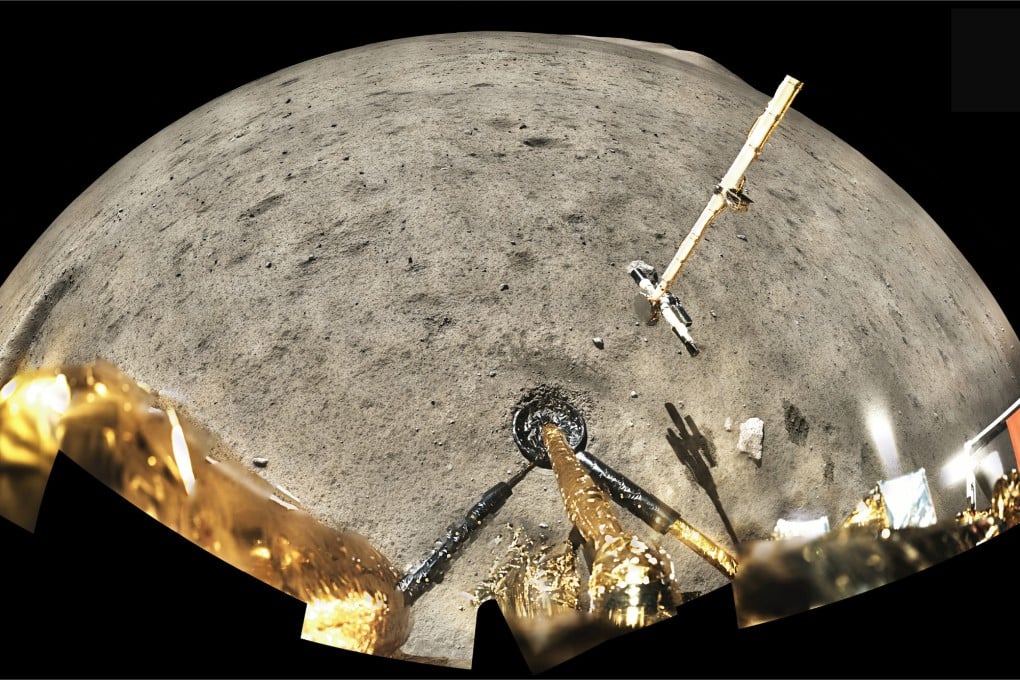Advertisement
Chinese scientists find 2 new minerals on the moon that could explain the mystery of the lunar landscape
- Two different structures of the titanium compound Ti2O became the seventh and eighth minerals to be discovered by humankind on the moon
- The minerals, collected by the Chang’e 5 mission, back up a theory of micrometeorites colliding with the moon to form its lunar landscape
Reading Time:2 minutes
Why you can trust SCMP
17

Ling Xinin Ohio
Scientists could be a step closer to solving the mystery of how the surface of the moon got its weathered and cratered appearance, after the discovery of unique minerals in lunar soil samples collected by the Chang’e 5 mission.
Advertisement
Titanium compounds, including Ti2O, which have never been seen in natural samples on Earth, were found on the surface of a tiny glass bead brought back by China’s Chang’e 5 spacecraft in 2020, according to researchers from the Institute of Geochemistry in Guiyang and their colleagues in Guangzhou and Macau.
The minerals had probably formed as a result of intense vaporisation and deposition – the transition of gas into solid without passing through the liquid phase – triggered by the constant, powerful bombardment of micrometeorites from space, the team wrote in the journal Nature Astronomy last week.
“Micrometeorite impacts have been known to play a key role in altering the lunar landscape, but how those transformations actually happened remained elusive,” the researchers wrote in a release on the institute’s website.
“Our study provided new clues to the weathering processes on the moon as well as on other airless planetary bodies in the solar system, such as Mercury and asteroids,” they wrote.

The team said that Ti2O, which came in two structures on the bead, became the seventh and eighth minerals ever discovered by humankind on the moon. The first five were found in US Apollo missions and Russian Luna missions, while a sixth one, named Changesite-(Y), was detected by China in Chang’e 5 samples in 2022.
Advertisement

Advertisement